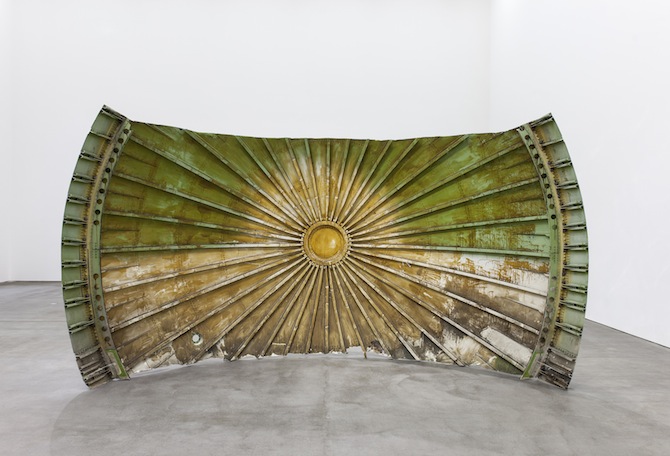
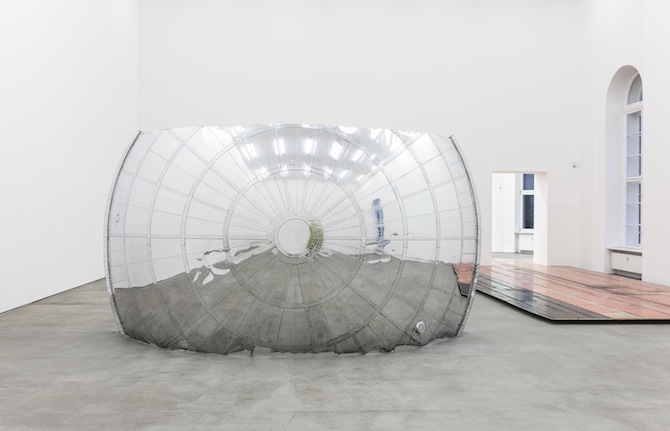
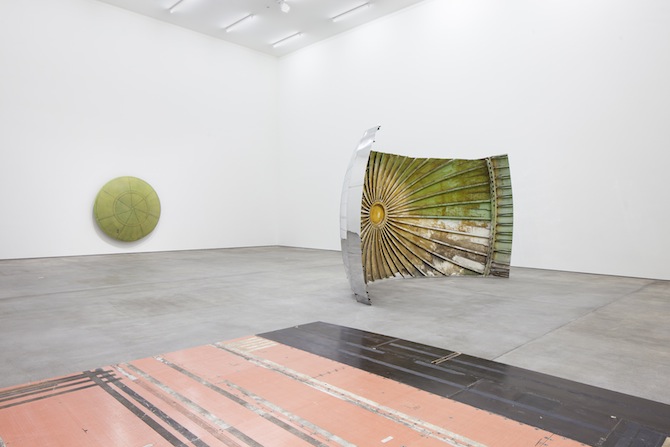
 from the top: Installation views, Michail Pirgelis, 'adopted', Sprüth Magers Berlin, February 7 - March 5, 2014 / Courtesy Sprüth Magers Berlin / © Michail Pirgelis
from the top: Installation views, Michail Pirgelis, 'adopted', Sprüth Magers Berlin, February 7 - March 5, 2014 / Courtesy Sprüth Magers Berlin / © Michail Pirgelis
Wanting to become an archeologist when he was a child, greek artist Michail Pirgelis today works with other and much larger kinds of artefacts: He employs original fragments of aeronautic bodies, transformed into wall-objects, giant sculptures or room-filling floor installations. His first airplane object ‘Ikarus’, which he created in 2001, already introduced the dialectic between flying’s symbolic weightlessness and its distressingly massive construction components. Playing on this ambiguity, Pirgelis continues to prepare dismantled airplane modules, transforming its technical skeleton into graceful objects. As in his recent solo-show “adopted” at Sprüth Magers Berlin [photos], the awareness of a small threshold between the tragic relict and the implied elevation is always present. In a short interview with the Cologne-based artist, Michail told us about his practice and what the dream of flying implies to him.
Anna-Lena Werner: Michail, since several years you have used parts of former airplanes as the major material of your work. Do you enjoy flying?
Michail Pirgelis: Yes!
Anna-Lena: Did you want to become a pilot, when you were a kid?
Michail: No, when I was a child, I wanted to become an archeologist.
Anna-Lena: You get most of your material from airplane cemeteries in California and Arizona. Why can't you get them in Germany, where you live and work?
Michail: Europe’s aeronautical authority monitors the paths of an airplane much stricter. It is not that easy to get particular original parts. Additionally, in the desert the materials are exposed to special weather conditions causing a patina, which is of prime importance to my work.
Anna-Lena: The fact that these giant and dismantled aeronautical bodies lost their original function makes them both, desolate but also beautiful in a way. How do you see them?
Michail: I only see the beauty in these exploited aeronautic bodies. It is the ceasing durability of the dream of flying in its purest form.
Anna-Lena: What does the dream of flying imply to you?
Michail: The dream of flying always implies the desire to overcome human capabilities. I think this appears in my work insofar as the fragments still carry a sense of this “failed hope”. They are ruins, while similarly embodying the potential from which they originated.
Anna-Lena: How do you decide, whether you leave an object the way you received it, or whether you work them over, polish or sandpaper them?
Michail: That is a good question. Cuts and surface treatments occur in sort of a working process. To some extend I try to change the materiality, or to make it even more abstract. One feels whether it works or whether it fails. I can’t really say why.
Michail Pirgelis
'adopted'
(February 7 - March 5, 2014)
Sprüth Magers Berlin
Oranienburger Straße 18
D-10178 Berlin
Opening Hours: Tue – Sat, 11 – 18h
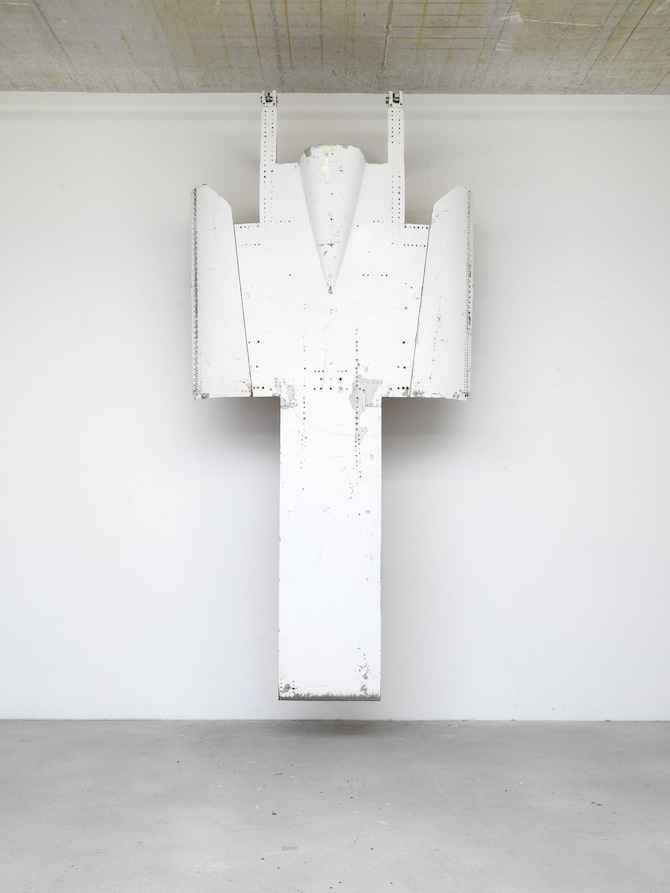


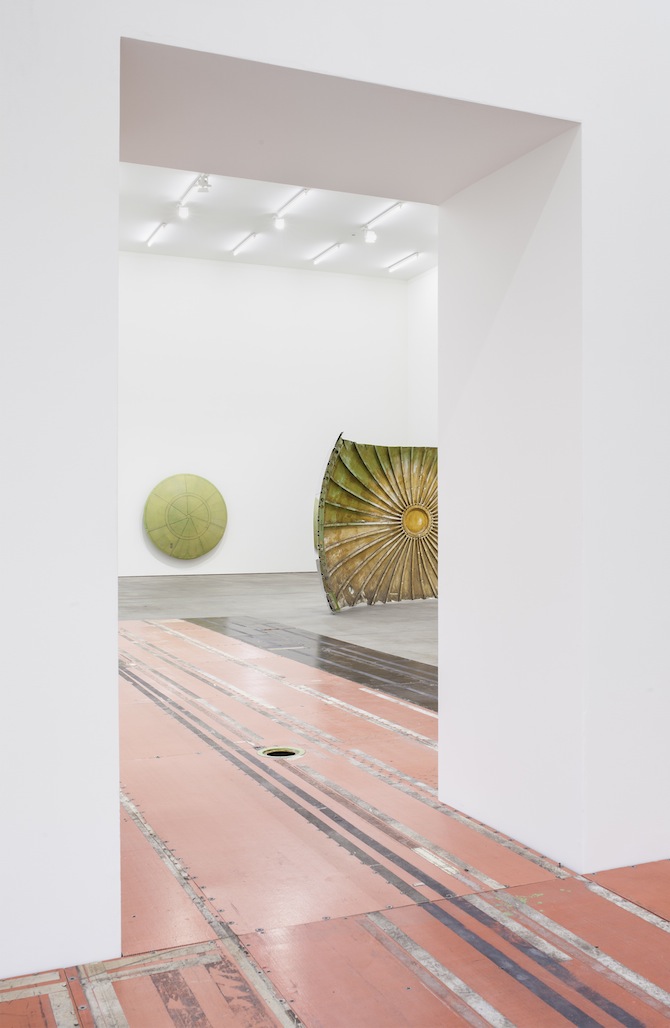
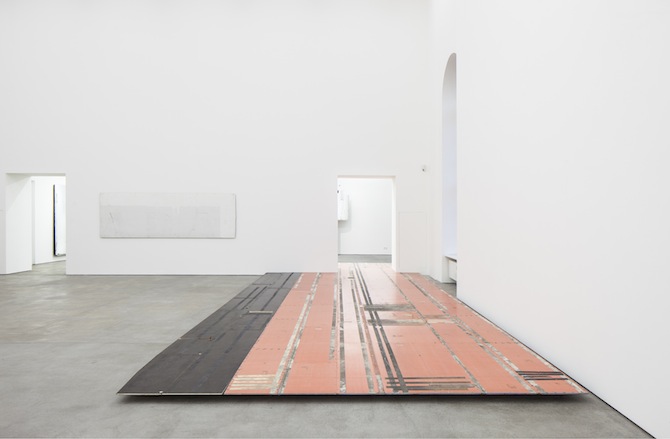 from the top: Michail Pirgelis "Onera", 2008 Aluminium, lacquer 282 x 130 x 22 cm ; Michail Pirgelis "Tresor", 2013 Aluminium, titan, lacquer 245 x 175 x 14 cm / both © Michail Pirgelis, Courtesy Sprüth Magers Berlin London ; (3x) Installation view, Michail Pirgelis, 'adopted', Sprüth Magers Berlin, February 7 - March 5, 2014
from the top: Michail Pirgelis "Onera", 2008 Aluminium, lacquer 282 x 130 x 22 cm ; Michail Pirgelis "Tresor", 2013 Aluminium, titan, lacquer 245 x 175 x 14 cm / both © Michail Pirgelis, Courtesy Sprüth Magers Berlin London ; (3x) Installation view, Michail Pirgelis, 'adopted', Sprüth Magers Berlin, February 7 - March 5, 2014
